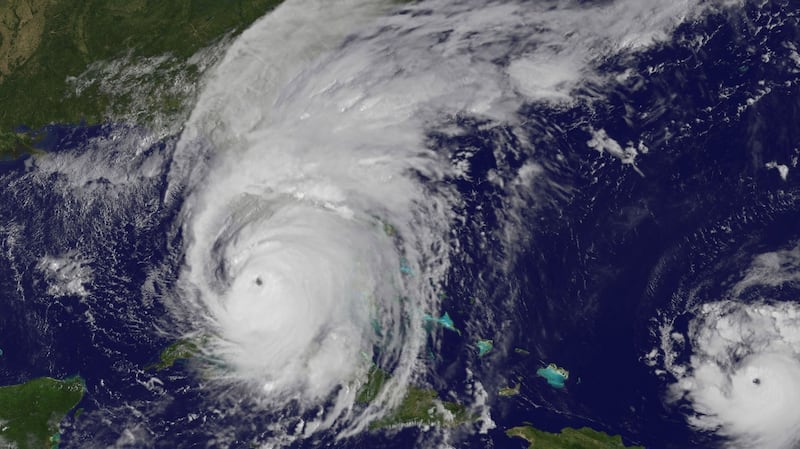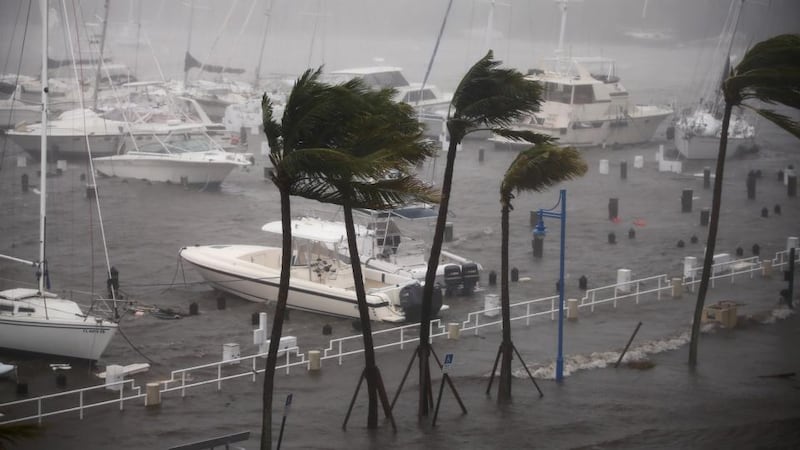The west coast of Florida was braced for devastating storm surges of up to 15ft as Hurricane Irma barrelled its way north through the state on Sunday, leaving a trail of destruction and shattering Miami.
The 480km-wide hurricane crashed down on Florida on Sunday morning, hurling winds of up to 200km/h and bringing storm surges of up to 10ft to coastal areas, with further devastation expected on Monday as it gravitates north.
After gathering strength over the warm water between Cuba and Florida on Saturday night, Hurricane Irma made landfall in the US mainland shortly after sunrise on the Florida Keys – the small chain of islands off the southern tip of Florida.


It then continued its slow but deadly trajectory northwest before making landfall for a second time near Naples on the west coast last night, with the cities of St Petersburg, Naples and Tampa, due to bear the brunt of the damage, including severe flooding. “This is an extremely dangerous and life-threatening situation,” the National Weather Service said as the storm closed in a second time near Naples.
Heavily populated east coast
But the hurricane – larger than the state itself – also brought destruction to the heavily-populated east coast of Florida.
Fierce winds pummelled the Miami and Miami Beach region throughout the day, sending debris flying and causing several of the city’s construction cranes to collapse. Water flooded into homes and businesses in downtown Miami as the city was ravaged by a storm surge, with water waist-deep in some streets and the city’s financial district inundated.
At least three people are reported to have died, and more than two million homes were left without power.
Up to 6.5 million people have been ordered to evacuate the area – one of the biggest evacuations in US history – as the storm engulfed the region. Speaking on Sunday Florida's governor Rick Scott said: "People ask what they can do for us. Pray for us. We need volunteers, nurses. I hope everybody will pray for us."
Miami-Dade country imposed a curfew in the region from 7pm as the area sustained relentless torrential rain throughout Sunday.
Georgia and South Carolina are expected to face flooding later in the week as the storm continues north, with Tennessee and Alabama also likely to be affected though the power of the hurricane is expected to significantly subside.
















